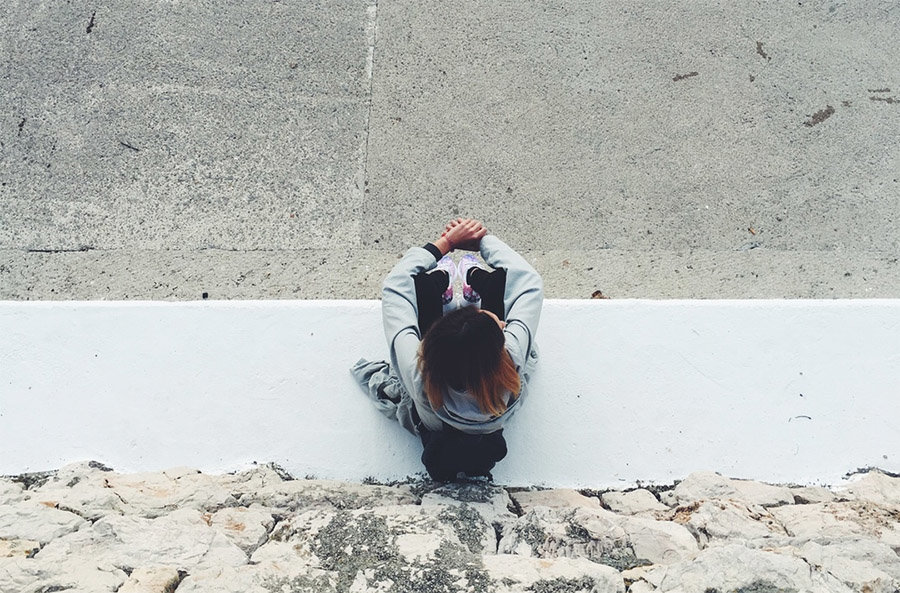This article was last updated on April 18, 2022
We all get discouraged from time to time. You can’t really avoid it. Think of it as an opportunity to get better, a test that god or the universe has given to you. He wants to see if you’re going to give in, or…keep going. If you’d be a robot, it’d be much easier…right? You wouldn’t get discouraged, ever. Unfortunately, you’re no robot; you’re a human-being. And I don’t think you’ll be around when they manage to put a human brain into a machine, letting you live forever. No, my friend, you’re stuck with this ticket. There’s no way around this bullet.
The thing with getting discouraged is that it’s not there without reason. There’s a reason you’re discouraged. Your body’s trying to tell you something. What’s it trying to say? Something’s not working: that’s what it’s trying to say.
When things are going well, do you get discouraged? No, you don’t! When is it that this feeling manifests itself? That’s right, when you’re not making any progress. So take it as a message from your body saying, “the strategy you’re employing isn’t working; but you persist with it; you frustrate me greatly; I’m feeling discouraged right now”.
Okay, you know you’re doing something wrong. You haven’t had time to process and accept it yet, that’s all. Intellectual understanding takes more time than gut feeling as we all know.
So what to do about it? What must I change? That’s the hard part. Could it be that your inability to change direction is the result of a lack of creativity? You’d only change course if you had an alternative in mind, right? You wouldn’t otherwise. We’d rather, in our minds, keep doing the same thing–however ineffectual it may be–than to admit we were wrong the whole time. You wouldn’t want to look dumb now…would you.
This is the first rule: learn to interpret the signals your body’s giving to you; and you’ll adapt better to circumstances. Don’t take discouragement, boredom, laziness…as bad things; take them as good things; in the sense that, they’re telling you something. They’re telling you to change. Even if it’s the slightest thing; you have to change–at least, until the feeling vanishes.
I’m bored right now. I have to make writing these articles more exciting. And…I’d smile to myself; but not this stupid I-don’t-know-what-I’m-going-to-do kind of smile. It was just I smiled knowingly to myself, and…I saw it for what it was:
I’ve been a writer for a while now, that’s…getting into a routine. I’m not doing anything wrong. It’s sad and it’s real pathetic; but, some of the stuff was…I was getting all caught-up on the same themes, subjects. They were…you know, to me, at this point…they were really boring: I always did the same things, I thought; I always wrote the same way; and I got the feeling that I was always using the same words–and I was getting frustrated; because I didn’t see a way out of this, out of this rut.
But luckily, I’d plugged in those thoughts telling me to change something, change anything; it doesn’t matter, but do something.
And you know, the titillating little thoughts…and I said, geez, I keep walking away from it. And I’d feel so guilty and weak for not being able to come up with a solution…right? So, I kept driving and driving on myself saying, I’ve got to get out of my comfort-zone; I’ve got to do something about this.
Knowing you’ve got to change isn’t enough. You still might not know what to do. The feeling of discouragement, or boredom, or whatever the case may be, is a signal. Now sometimes the signal can be a little bit weak, for you to decode properly. You need to make it that much stronger, that much clearer, making it so crystal clear in your head that you’d have no choice but to hear it–and take action on it.
Instead of it being a slight discomfort…like a spot you can’t quite scratch; It has to be a “painful” kind of discomfort! See what I mean? Instead of frustration, it should anger. Instead of depression (a profound emptiness), it should be sadness. And instead of discouragement, it should be profound outrage. You get the point.
So how do you become more alive? This is how I do it:
4 Ways to Overcome Personal Discouragement
1) Meditation
The kind of meditation I recommend is from a man called Roy Masters. He used to be a hypnotist in the past and helped people with certain problems they had, like addictions (e.g to stop smoking).
But what he realized was that people didn’t need hypnosis–they were already hypnotised–they needed de-hypnosis.
He argues that we are all in a trance-like-state from all the publicity we get bombarded with on a consistent basis, the media in general. The world is full of suggestions that “pollute” our minds.
So to erase all that and connect yourself with your inner core, we must de-hypnotise ourselves; in other words–meditate. I picked his meditation over the others; because it’s meant to ground you, as well as calm the mind.
And I’ll explain in a minute why it’s so important. “Grounding” means to be closer to the ground. What do you mean? I’m already touching the ground, not getting any closer am I. In a practical sense, of course, you’re touching the ground. But I’m talking in terms of sensations.
Do you sense that your legs are sustaining you, or do you sense them fragile? Believe it or not, but, not everyone has the same sensation of being rooted to the ground. The general rule is: the more grounded you are, the more present and alive you’ll feel.
When we feel ungrounded, our energy is in our heads. We feel disconnected, anxious, lost. The objective of this meditation is to push the excess energy downwards, to the ground, thus the term “grounding”.
Here is Roy Masters’s guided meditation
Note: I am not an advocate of Roy Masters. I just happen to think his meditation is excellent.
Note 2: The subject of grounding would deserve its own article. But, to make it short, I’ll just redirect you guys to this amazing article right here that explains how grounding is important for any success in life. I highly recommend this read.
2) Bioenergetics
The idea behind Bioenergetics is that we all have blocks to our emotional expression and well-being. And they are revealed as chronic muscle tensions which are, most of the time, unconscious.
The blocks are dealt with using–massage, physical exercises (designed to make you feel deeper), affective expressions, and psychoanalytic principles. The founder of this therapy is Alexander Lowen. He was a disciple of Wilhelm Reich who was himself a disciple of Sigmund Freud, the father of psychoanalysis.
The whole idea is to bring the unconscious to consciousness, so it can be faced. Repression takes a lot of energy…valuable energy that could be used to transform your life and be the force that you were meant to be.
Bioenergetics puts emphasis on the importance of feeling grounded. “Standing on ones own two feet” takes on a metaphoric and literal sense in Bioenergetics. You literally have to feel your legs sustaining you.
The staple exercises in this practice are the bow, and the “reverse-bow”. The former is meant to ground you but at the same time increase your sense of potency into the world. And the latter is just pure grounding…okay?
I’ll show you how it’s done, don’t worry. It’s really easy. Even my grand-mother could do it–if she were still alive that is. This is how Michael Samsel (therapist) explains the two exercises:
The Bow: “Stand with feet slightly wider than shoulder width apart, perhaps 18 inches. Keep the outside edges of the feet going straight out (which will point the toes inward somewhat). Make a loose fist with both hands and reach arms around to push into the small of the back. Bend both knees deeply but keep heels on the floor. Arch backward so that shoulders go back and pelvis goes forward. Keep weight on the balls of the feet. The idea and ideal behind this exercise is to assume a smooth curve or ‘bow’ Remember to breathe into the belly. As the body loosens up over time vibration will start to happen. Try to hold the position for at least a minute. Follow up with the Reverse-Bow.”
Reverse-Bow: “Stand with bare (or at least stocking) feet about 10 inches apart or slightly less than shoulder width. Have the outside edge of the feet going straight ahead which will make the inner edge of the feet appear to be angling in slightly toward each other. Keep knees bent slightly. Bend over forward until fingertips lightly brush floor. Bend the knees as much as needed to get hands to the floor. Use hands only for contact–do not put any weight on them. Let the head drop as much as possible, that is, let the head hang.
Try to keep weight over the balls of the feet. If the heels are slightly off the ground try pushing them down and simultaneously pushing the hips up by straightening the knees. Do not straighten knees all the way or lock them. Remember to breath. Making sounds enhances the exercise. See if it is possible to curve the upper torso. If the torso is too straight, balance will force the butt back behind the feet, but as much as possible the hips should be over the feet. Allow any vibrations to occur in the legs”
Now do the following routine everyday:
- The bow (1 minute)
- the reverse-bow (2 minutes)
- and repeat 3 times
Alexander Lowen’s books that I have, and that I’d recommend would be the following:
- Bioenergetics–The revolutionary therapy that uses the language of the body to heal the problems of the mind
- Fear of life
Note: You might not want to read a whole book. If that is the case, you can read the fundamentals of the practice here.
3) Flexibility
Working your flexibility is so so important. If you payed attention to what I said in the previous parts of this article, you’d have noticed that the legs and feet are the foundation of our existence on this earth. Without our legs we are nothing: we can’t move; we can’t attack; we can’t run away; and we can’t make things happen.
Without any presence of our legs, we drift in our heads and become ineffectual. The legs are like the fire that heats up the whole room. Your energy comes from those feet of yours, the contact to the ground.
I’d say to you: “stretch your feet and legs first”. Since grounding is so important it makes sense to work with what’s touching the ground directly. The more you can rid your foot of tension, the more it’ll become sensitive to what’s going on beneath it–more of your foot, literally, will touch the ground.
Okay, we’re going to need the expert help of Kelly Starrett a doctor in physical therapy and the advice of one of the world’s most renowned stretch-experts Kit Laughlin.
I’ll give you the following foot sequence, in the order you should do them (they complement really well the bioenergetic exercises).
- Kelly Starrett’s ready-to-run-progression 2
- Kit laughlin’s foot sequence
Do this everyday if you can!
4) Sleeping Better
You should treat sleep-time as if it were an appointment. This is actually more important than any meeting you’ll ever have in your life. I’d write it down on my agenda. It’s that big of a deal. You may think you’re sleeping, but think again. I wouldn’t be so sure if I were you; because what you call sleep may not actually be sleep at all. Ask yourself this then: do I feel rested when I wake up in the morning? Do I feel alive and vital? Do I look forward to sleep at night? These are vital questions.
Because if they’re not answered truthfully, the only person whose going to suffer the consequences is you. You’re not sleeping for somebody else. You don’t have another choice in the matter but to go to bed everyday. It’s your duty to be well rested…okay?
Nighttime is the only moment your body has to regenerate itself, renew itself–don’t take it lightly. And you’re cutting on your sleep…again; because you’ve got work to do. You’ve got to get things done, time flies. What’s going to fly is your health.
And you won’t get it back that easy either. If you’d kept an eye on your well-being sooner, these current health issues wouldn’t have existed: that’s what you’ll tell yourself in the future.
The journal of the association of american medical colleges has in it a study that shows that there is a strong relationship between chronic sleep deprivation and depression.
Depression, as we’ve established, is the absence of feeling. So what can we conclude from that? If you’d improve the quality of your sleep, you’d have better access to your emotions. Emotion is energy; so you wouldn’t be depressed that easily. Creativity stems from emotion–and you’re trying to control yourself. Let yourself free!
Go buy this book on amazon. It’s not mine (I wish). It’s a book called The Effortless Sleep Method by Sacha Stevens. It has helped me immensely. I…cannot…thank her enough, really. Even if you don’t have insomnia, buy this book. It will serve you good. And you probably need it without even realizing it yet.
Note: Here’s a quick extra tip I can give you: before going to bed try doing kettlebell abdominal massages.
I know it sounds weird, or strange, but trust me on this one. It will help…I don’t know how to tell you how much; but it’ll rock your world. If you keep at it–and I’ve experienced it myself–you’ll feel a huge relaxation coming.
And you’ll drop like a rock; because your breathing would have deepened so much. You’ll be complaining to me that you’re sleeping too well. That’s a joke of course; there’s no such thing.
Photo credit: Unsplash.com





